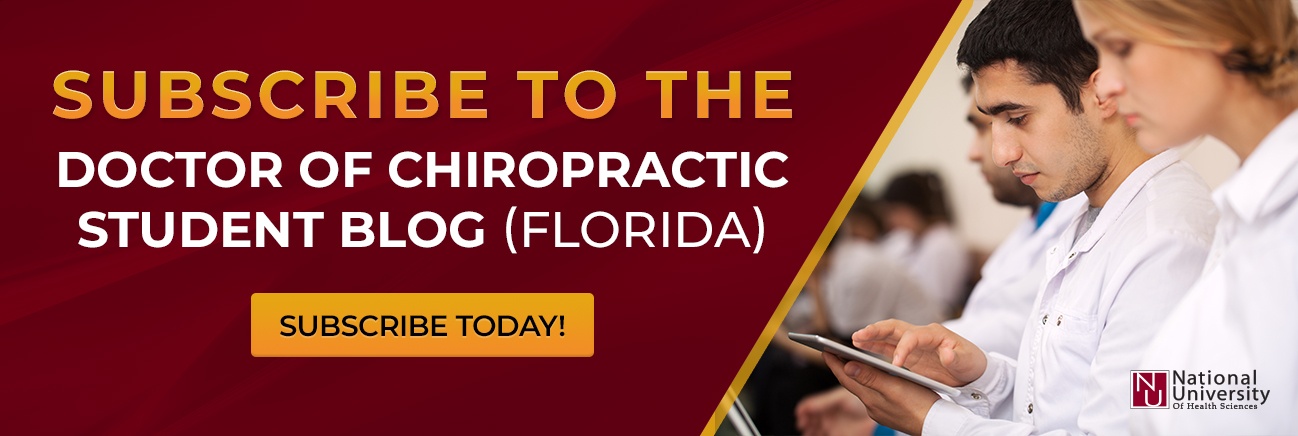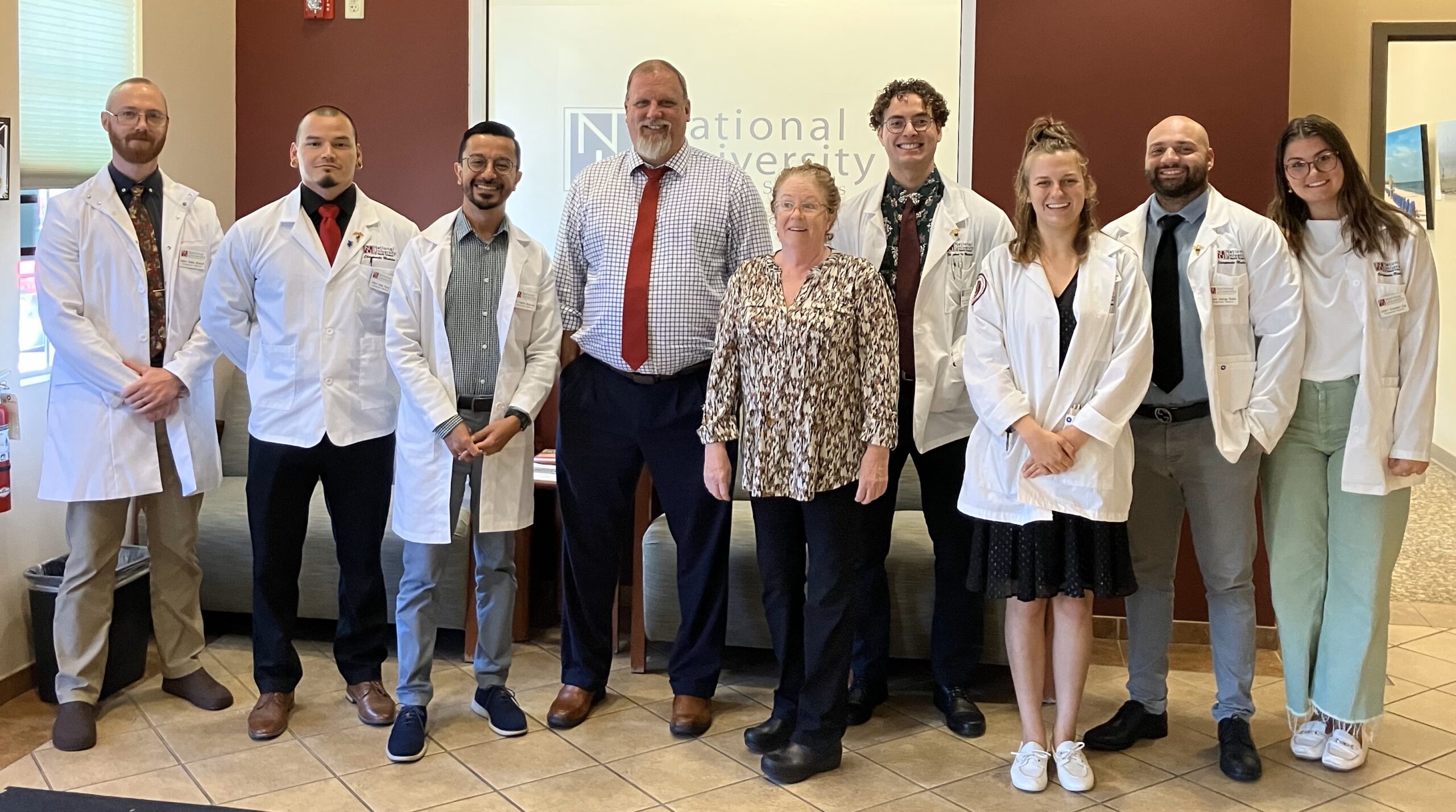We are already on week 8 of Phase II and Tri-5 has proven to be quite challenging. My emphasis on time management has felt understated until now. With Part I Boards just around the corner in late April, I am tackling fast track courses, studying for boards, participating in clubs, and planning my wedding…Oh yes, I got engaged over the Winter break!

It’s a stressful time but also an exciting time. In Phase II, many of the courses taken are much more clinical and relevant to the chiropractic field, and with that comes a different style of taking exams. Last week, we had our first EM Extremities practical in person with volunteers acting as our patients. I had to dress up as a clinician, knock on the clinic door, introduce myself to the patient, listen to their symptoms, conduct a physical exam and orthopedic tests, determine their diagnosis, and review my treatment strategy. Just on the other side of the room, the professor (Dr. Guadagno) was recording the interaction to grade us on our skills and allow us to watch it after and learn from any potential mistakes we made. This was a completely new experience for me that really emphasized how fast I am going through this NUHS program and inching toward becoming a true chiropractic physician communicating with patients and treating their pains and illnesses.
Although my practical was based on identifying and diagnosing a lower extremity injury, I found myself using knowledge from different courses to help treat the patient, such as suggesting the use of botanicals like a turmeric, Boswellia, ginger anti-inflammatory complex, and describing the differences between an X-ray and MRI to the patient. I believe being a physician is not just about diagnosing and treating patients, but it also really requires you to learn to listen to and communicate with your patient. It’s important to remember that the person sitting on your table is in pain, worried, and maybe nervous having a doctor determine the diagnosis. Perhaps they have had this pain for a chronic period and are tired and frustrated. Perhaps they just had this acute injury and are concerned about what it could be and how long it will take to heal. It’s important to be patient and understand what they are feeling.
As a future chiropractic physician, I aim to explain the techniques I’m conducting, discuss the diagnosis and treatment options, and take the time to answer any of their questions. It’s crucial to enhance patient well-being and comfort in your practice. These in-person practicals with volunteer patients require understanding whole health concepts and intertwining topics learned in different courses. While this practical was stressful going in, I feel like it is a valuable exam style to prepare us for the real-world.



